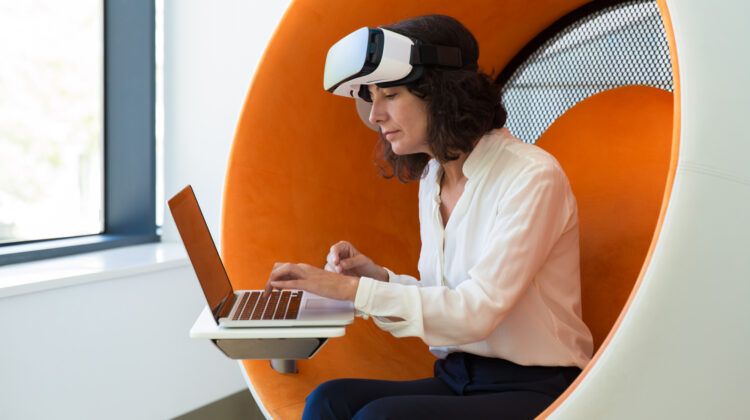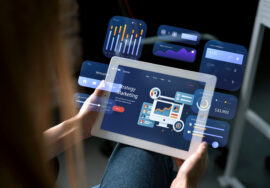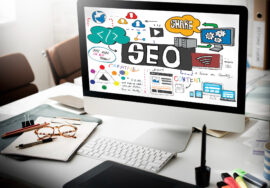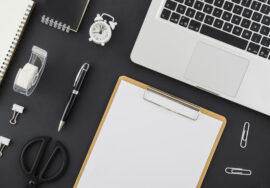
Boost Remote Productivity with AI-Powered Gadgets That Understand Context and Routine
Introduction: The Remote Work Revolution Meets AI
Remote work has shifted from a temporary trend into a long-term reality. Professionals now rely on technology not just for connectivity but for productivity, focus, and well-being. The latest wave of AI-powered gadgets offers more than simple functionality—they understand context and adapt to routines. For anyone building a home office setup, these devices are becoming true Work Essentials, blending intelligence with convenience to improve efficiency and work-life balance.
Why Context-Aware Gadgets Matter
Traditional tools follow instructions, while AI-driven gadgets anticipate needs. By analyzing patterns, environmental cues, and schedules, they:
- Automate repetitive tasks.
- Adjust settings dynamically for comfort.
- Offer reminders and insights based on behavior.
- Reduce distractions while optimizing workflow.
This proactive support is key for remote professionals juggling multiple roles from a single space.
Smart Assistants as Digital Colleagues
AI assistants like Amazon Alexa, Google Assistant, and Apple’s Siri have grown beyond timers and weather updates. They now integrate into productivity workflows.
- Contextual Scheduling: Recognize recurring meeting times and suggest breaks.
- Task Automation: Trigger workflows, such as dimming lights and launching video apps before a call.
- Voice Notes and Summaries: Transcribe ideas instantly and deliver summaries for later review.
When paired with other smart gadgets, assistants create cohesive ecosystems that save valuable mental energy.
Intelligent Displays and Desks
Work-from-home setups often revolve around multiple screens. AI-enhanced monitors and smart desks now actively support focus and ergonomics.
- Adaptive Monitors: Screens like Dell’s Ultrasharp series integrate AI that adjusts brightness, blue light, and resolution based on time of day and workload.
- Smart Desks: Motorized desks powered by AI track standing vs. sitting habits, suggesting posture changes to improve health.
- Multi-Tasking Layouts: AI-enabled displays can predict common app pairings—such as video conferencing with note-taking tools—and set them up automatically.
These innovations allow professionals to reduce friction and stay comfortable during long workdays.
AI-Powered Noise-Cancelling Headphones
Distractions are one of the biggest challenges of remote work. Headphones now combine noise cancellation with AI to optimize for context.
- Adaptive Filtering: Adjusts levels based on whether you’re in a quiet home or a noisy café.
- Smart Transparency: Lets in important sounds—like doorbells—while blocking background chatter.
- Meeting Optimization: AI microphones isolate speech, improving clarity during calls.
For anyone in Work Essentials, quality headphones with AI capabilities are an indispensable investment.
Smart Lighting that Learns Your Routine
Lighting affects focus, mood, and energy. AI-enabled systems like Philips Hue and Nanoleaf go beyond programmable scenes.
- Routine Recognition: Lights adjust color temperature to match circadian rhythms, supporting alertness in the morning and relaxation in the evening.
- Call Integration: Indicators signal when you’re on video calls, reducing interruptions.
- Ambient Adaptation: Lights dim automatically during presentations or media playback.
This level of adaptability ensures that lighting enhances productivity instead of becoming another manual adjustment.
Wearables and AI-Driven Health Tracking
Remote productivity also depends on physical well-being. Wearables equipped with AI help balance focus with health.
- Smartwatches: Monitor heart rate, stress, and suggest breaks when fatigue is detected.
- AI Posture Trackers: Devices like Upright Go use sensors to vibrate gently when posture declines.
- Routine Optimization: Over time, wearables learn patterns and nudge users toward healthier daily routines.
These subtle reminders keep remote professionals energized and focused without sacrificing health.
AI-Enhanced Collaboration Tools
Remote work thrives on collaboration, and AI gadgets are making virtual teamwork more effective.
- Smart Webcams: Cameras like Logitech’s AI-driven models auto-adjust lighting and framing for professional video quality.
- Meeting Summarizers: AI transcription tools capture notes, action items, and even assign tasks.
- Contextual Reminders: Tools integrated into collaboration apps remind users of upcoming deadlines based on previous activity.
For teams spread across time zones, these features keep communication smooth and actionable.
The Role of Ambient AI in Remote Workspaces
Ambient AI—the technology that operates quietly in the background—brings everything together. It links devices to create holistic work environments.
Imagine this scenario: Your AI assistant recognizes it’s 8:55 a.m. and automatically lowers desk height for sitting, adjusts lighting for focus, launches your daily project dashboard, and silences personal notifications. Later, as your smartwatch detects fatigue, lights soften, headphones reduce intensity, and your desk rises for standing—all without you lifting a finger.
This invisible orchestration of gadgets is the future of Work Essentials.
Challenges and Considerations
While AI-powered gadgets are powerful, there are important factors to weigh:
- Privacy: Devices analyzing habits must safeguard sensitive data.
- Cost: Premium gadgets may require significant investment.
- Ecosystem Lock-In: Sticking with one platform (Apple, Google, Amazon) simplifies integration but limits flexibility.
- Over-Automation: Gadgets should complement workflows without creating reliance or distraction.
Users should prioritize tools that offer transparency and customization.
Expert Insights: The Future of AI Gadgets for Work Essentials
Industry experts foresee a rapid expansion of predictive AI in home offices. Gadgets will soon anticipate focus periods and align device settings automatically. Integration with mental health monitoring will expand, offering early warnings for burnout. Even physical spaces—chairs, air quality monitors, and temperature controls—will join the AI ecosystem, creating environments that adapt to both productivity and well-being.
Practical Tips for Consumers
For remote workers exploring AI-powered productivity gadgets:
- Start Small: Begin with AI headphones or lighting systems before scaling to smart desks and multi-device ecosystems.
- Look for Interoperability: Choose gadgets that integrate across brands, not just within one ecosystem.
- Prioritize Essentials: Focus on tools that directly impact your daily tasks—like displays, sound, and lighting.
- Set Boundaries: Use device settings to ensure automation enhances productivity without invading personal time.
Affiliate recommendations can highlight starter kits, such as AI-enabled lighting and noise-cancelling headphones, as well as premium bundles for professionals building comprehensive smart workspaces.
Conclusion: Redefining Productivity with Work Essentials
Remote productivity no longer relies solely on discipline or rigid routines. With AI-powered gadgets that understand context and routine, home offices evolve into intelligent environments that anticipate needs, reduce friction, and support well-being.
For professionals investing in Work Essentials, these devices provide more than convenience—they act as silent partners in achieving focus and balance. Whether through adaptive lighting, smart assistants, or AI-enhanced wearables, the future of remote work is one where technology works alongside you, curating an environment designed for success.







